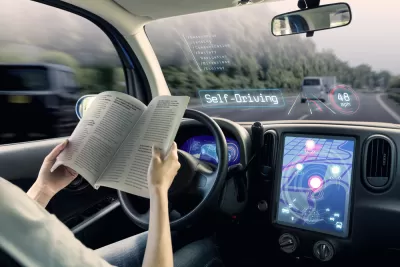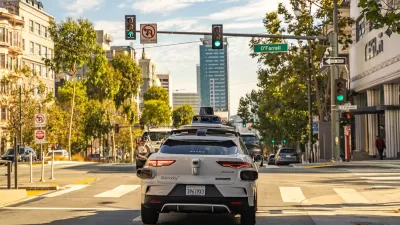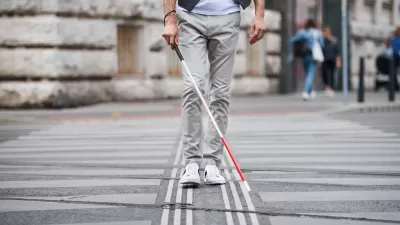States tend to default to national standards for regulating AVs, but federal officials have been slow to implement rules directed specifically at autonomous vehicles.

Wyatt Gordon asks whether states, more specifically Virginia, should create their own legal frameworks for regulating autonomous vehicles, or default to national standards, as many do now. “As is often the case in the United States, the regulation of autonomous vehicles is largely left to the states, resulting in a patchwork of conflicting and confusing policies where some sort of national approach ought to exist.” While states have the right to create laws regulating the technology, Gordon points out, few have taken steps to do so.
Amanda Hamm, the Virginia Department of Transportation’s connected and automated vehicle program manager, said that in the Commonwealth, “Currently AVs are basically just being treated as human drivers. Any law that applies to a person operating a vehicle also applies to whoever is operating that autonomous vehicle.”
According to Gordon, “So far the NHTSA has done little to prevent AVs from running red lights, swerving toward concrete barriers, or even killing pedestrians; however, last month the agency launched an education campaign to help consumers understand that systems like those from Tesla called “autopilot” and “full self-driving” don’t truly mean what they say (and could kill you or others).”
As an example of an existing AV program, Gordon points to Fairfax County’s Relay electric shuttle, which travels at 10 miles per hour over a one-mile route on a limited schedule, with a ‘safety steward’ on board. The shuttle is designed as a pilot for assessing the functionality of the technology and “how the shuttle itself interacts with other vehicles on the road and pedestrians,” said John Zarbo, the operations section chief at Fairfax Connector, which operates Relay. “County leaders have considered other shuttle routes around the Reston or Franconia Metro stations, but the limits of the technology have so far prohibited a second shuttle coming online. Whether it’s fast-flowing highway traffic or a complex urban environment, humans are far better at adapting their behavior to changing conditions.”
FULL STORY: Should autonomous vehicles be regulated in Virginia?

Study: Maui’s Plan to Convert Vacation Rentals to Long-Term Housing Could Cause Nearly $1 Billion Economic Loss
The plan would reduce visitor accommodation by 25,% resulting in 1,900 jobs lost.

North Texas Transit Leaders Tout Benefits of TOD for Growing Region
At a summit focused on transit-oriented development, policymakers discussed how North Texas’ expanded light rail system can serve as a tool for economic growth.

Using Old Oil and Gas Wells for Green Energy Storage
Penn State researchers have found that repurposing abandoned oil and gas wells for geothermal-assisted compressed-air energy storage can boost efficiency, reduce environmental risks, and support clean energy and job transitions.

From Blight to Benefit: Early Results From California’s Equitable Cleanup Program
The Equitable Community Revitalization Grant (ECRG) program is reshaping brownfield redevelopment by prioritizing projects in low-income and environmental justice communities, emphasizing equity, transparency, and community benefits.

Planting Relief: Tackling Las Vegas Heat One Tree at a Time
Nevada Plants, a Las Vegas-based nonprofit, is combating the city’s extreme urban heat by giving away trees to residents in underserved neighborhoods, promoting shade, sustainability, and community health.

How Madison’s Tree Planting Efforts Are Growing a Healthier Community
Madison’s annual tree planting initiative is enhancing environmental resilience, public health, and community livability by adding 1,400 carefully selected trees citywide, with strong community and institutional support for urban forestry.
Urban Design for Planners 1: Software Tools
This six-course series explores essential urban design concepts using open source software and equips planners with the tools they need to participate fully in the urban design process.
Planning for Universal Design
Learn the tools for implementing Universal Design in planning regulations.
Ascent Environmental
Borough of Carlisle
Institute for Housing and Urban Development Studies (IHS)
City of Grandview
Harvard GSD Executive Education
Toledo-Lucas County Plan Commissions
Salt Lake City
NYU Wagner Graduate School of Public Service




























